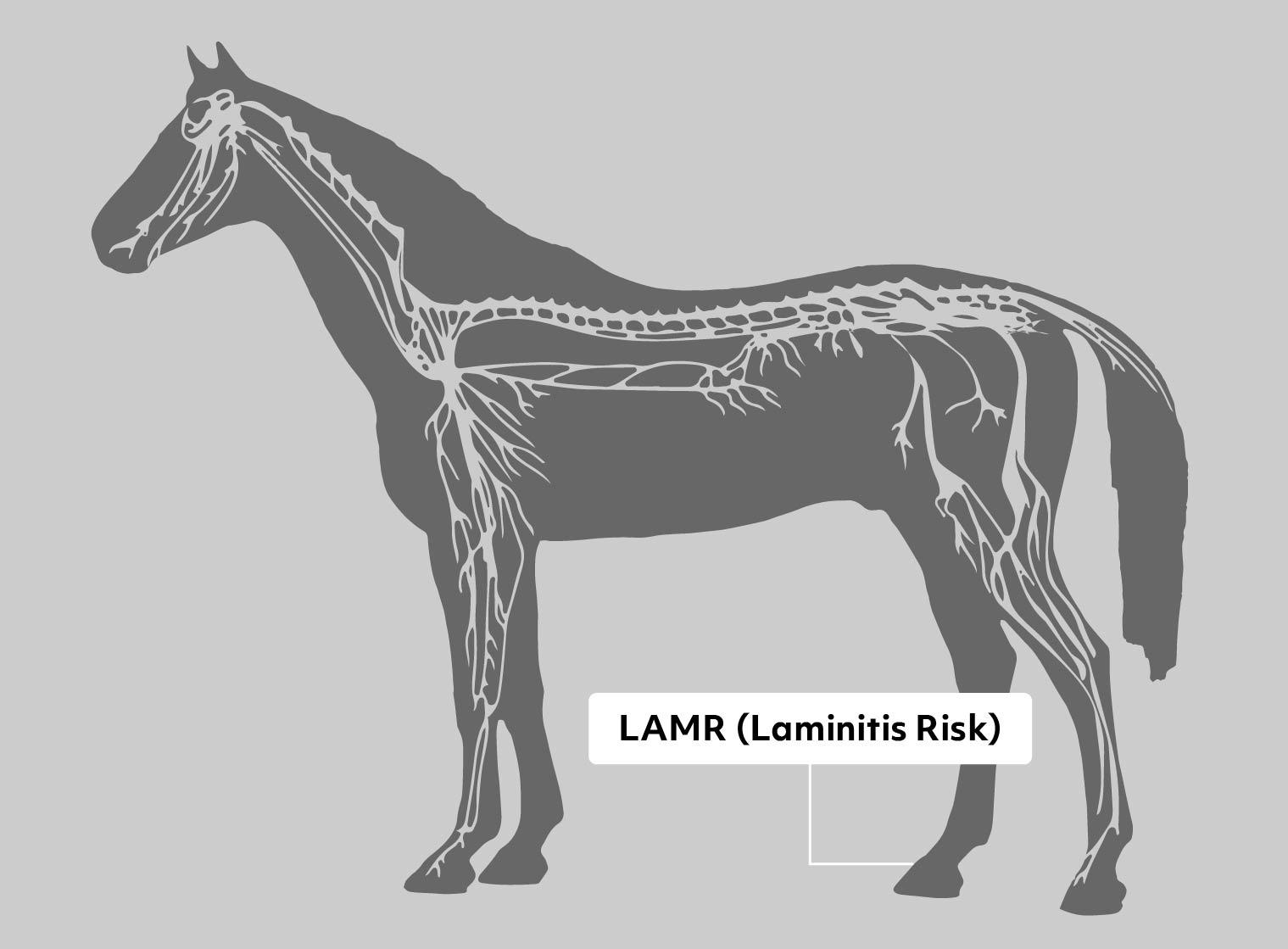Equine Metabolic Syndrome / Laminitis Risk (EMS / LAM)
Gene or Region: FAM174A
Reference Variant: T
Mutant Variant: C
Affected Breeds: Many
Research Confidence: Preliminary - Strong correlation in early studies, results have shown strong correlation in early studies of Arabian population
Explanation of Results: EMS/EMS = homozygous for Equine Metabolic Syndrome, at risk for EMS and increased risk for EMS-related Laminitis EMS/n= heterozygous for Equine Metabolic Syndrome, at risk for EMS and increased risk for EMS-related Laminitis n/n = no variant detected
General Description for Equine Metabolic Syndrome
Equine Metabolic Syndrome (EMS) is a wide-spread issue in the horse population. Primarily characterized by hyperinsulinemia (excess insulin circulating in the blood in relation to glucose levels), this metabolic disorder is often present in obese horses and ponies and can be challenging to diagnose as it can be misdiagnosed as "Cushing's" (a pituitary disfunction). Few treatments exist for EMS outside of diet management and exercise, which increases the need for early detection and prevention. Should obesity be allowed to set in, secondary chronic conditions, such as Laminitis can easily follow and further compromise the health of the horse. Breeders have also observed that horses with a tendency toward obesity (EMS) can also be difficult to manage in a reproductive environment (difficult to get in foal).
A genomewide association study (GWAS) using Arabian horses with a history of severe Laminitis secondary to EMS revealed significant genetic markers near a single candidate gene that may play a role in cholesterol homeostasis. This same genetic candidate correlated with a 9 time greater risk for Laminitis in horses with one or more variants that were also overweight/obese.
EMS Risk
-/- = n/n - No EMS variants detected. Normal risk for EMS and Laminitis +/- = EMS/n - One EMS variant detected. Horse is at risk for EMS and at increased risk for Laminitis +/+ = EMS/EMS - Two EMS variants detected. Horse is at risk for EMS and at increased risk for Laminitis (9 times greater risk than "normal" horses with no EMS variant)
EMS-Related Laminitis Risk
-/- = n/n - No EMS-LAM variants detected. Normal risk for EMS-related Laminitis +/- = EMS/n - One EMS-LAM variant detected. Horse is at increased risk for EMS-related Laminitis* +/+ = EMS/EMS - Two EMS-LAM variants detected. Horse is at increased risk for EMS - related Laminitis*
*9 times greater risk than "normal" horses with no EMS variant
References
Lewis, S. L., Holl, H.M, Streeter, C., Posbergh, C., Schanbacher, B. J., Place, N. J., Mallicote, M. F., Long, M. T., Brooks, S. A. (2017) Genomewide association study reveals a risk locus for equine metabolic syndrome in the Arabian horse. J Anim Sci 2017 Mar;95(2) 1071-1079
More Horse Health
Hydrocephalus
Hydrocephalus (HDC) is an abnormal build up of cerebral spinal fluid around the brain. It is believed that a narrowed passage within the brain prevents normal fluid absorption, leading to an obvious external cranial distension. Affected foals are often stillborn and are associated with dystocia in the dams.
Impaired Acrosomal Reaction
Impaired Acrosomal Reaction Subfertility (IAR) causes sub- or infertility in males. In normal fertilization, the the head of a sperm binds to the egg and releases the contents of a structure known as the acrosome. However, some males with IAR are unable to properly carry out this process.
